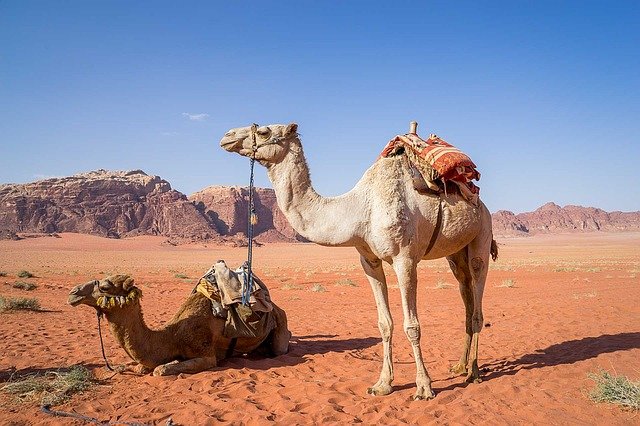We are deep into December with Christmas preparations proceeding at a brisk pace. Most trees are now up, many presents have been purchased or ordered, and we’ve already enjoyed reading numerous Christmas cards.
One of the simplest and yet most powerful Christmas decorations is the holy nativity. Various versions of this diorama exist from the exquisitely hand carved olivewood one in our living room to the plastic replica our grandchildren play with. No matter the style, nativities are potent reminders of the true history that birthed this holy holiday.
Most nativity sets include camels of some type. Although the Bible doesn’t mention them as the preferred ride of the Wise Men, they certainly could well have been. Because of their unique characteristics, camels were and still are used extensively in many parts of the Middle East for transportation and cargo through harsh deserts. Camels are the semis of the sands.
The Bible refers to camels nearly 60 times and Jesus Himself sarcastically spoke of one threading a needle to demonstrate the difficulty of wealthy people entering God’s Kingdom. Except for Christmastime and perhaps an occasional visit to the zoo, most Americans are rarely exposed to these very unique creatures. Because of this we are largely unacquainted with the incredible design features God has built into each model.
The camel is one of the few mammals that can tolerate variations in body temperature. While even a degree or two in either direction can spell trouble for us, a camel’s temperature can drop to a low of 93 at night and then rise to 106 in the daytime to prevent perspiration and loss of scarce water in the extreme desert heat.
Although a camel’s hump can consist of up to 100 pounds of fat, not liquid, these animals can consume over 25 gallons of water in just ten minutes allowing it to tank up quickly. Their blood cells have elastic membranes allowing them to rapidly absorb this moisture without bursting as would occur with other mammals. Not only can camels consume much saltier water, they also produce very concentrated syrup-like urine which again preserves vital body fluids.
While the camel’s appearance is lanky and comical, its long legs elevate it from the heat radiating from the desert surface and its EEEEE width feet allow it to walk on top of the dunes without sinking in as most horses do.
Perhaps the most unique features of camels relate to their homely faces. Their extra-long eyelashes are courtesy not of Maybelline but their Creator. These protect their eyes from abrasive sand.
In addition God gave them an extra set of eyelids beneath their normal ones that can, like wipers on a Kenworth, remove whatever sand particles make it past the lashes. Camels can actually see through these transparent eyelids enabling them to keep on trucking even in brutal sandstorms.
And how about those enormous lips? I still remember a camel slobbering all over my son’s hand as he fed one at a petting zoo. Because they cannot use fingers to manipulate their food like we can, God enabled them to accomplish this with their flexible lips. Their mouths are also incredibly tough and leathery allowing them to eat woody plants, tree branches, and even thorny briars that would slice our mouths to shreds.
While evolutionists try to explain how these incredibly specialized features developed by random chance, we can spend our time glorifying the God who created an animal perfectly suited to the harsh habitats it would occupy.
The next time you see a camel standing beside a nativity stable, remember the unique features God customized him with and lift up praise not only for the Babe in the manger, but for His incredible power and wisdom seen throughout His Creation.
Blessings, George
